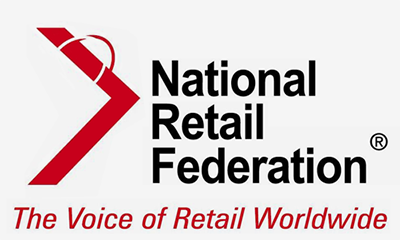Commerce, NRF report solid January retail sales

Retail sales showed decent post-holiday season growth, according to data issued by the United States Department of Commerce and the National Retail Federation (NRF).
Commerce reported that January retail sales were up 0.2 percent compared to December and saw a 5.6 percent annual gain at $472.1 billion. And total sales from November 2016 through January 2017 rose 4.6 percent compared to the same period a year ago. And non-store retailers were up 12 percent annually in January, down slightly from December’s 13.2 percent increase.
The NRF reported that retail sales, excluding automobiles, gas stations, and restaurants, headed up 3.8 percent annually in January and were up 0.4 percent on a seasonally-adjusted basis compared to a very strong December. January online and other non-store sales were flat from December to January and up 14.5 percent annually on an unadjusted basis.
“The retail industry started the year on a high note, continuing the momentum from the 2016 holiday season. The healthy monthly gain was driven by January’s strong payroll gains, retail employment gains and business sentiment,” NRF Chief Economist Jack Kleinhenz said in an NRF blog posting. “We haven’t seen strong January growth in several years, which indicates that consumers are increasing their spending and remain the leading driver of the economy.”
Stifel Chief Economist Lindsey Piegza was also bullish on January’s retail sales data, for the most part.
“A healthier-than-expected showing by the U.S. consumer at the start of the year with ten of the thirteen major categories on the rise,” she wrote in a research note. “Despite still-modest labor market conditions and lingering uncertainty surrounding the health of the U.S. economy, as well as the pathway for fiscal policy, consumer optimism has appeared to have buoyed shoppers out to the malls in America and loosened household purse strings. Although at this point, with extreme volatility in consumer activity as of late, the question remains: is this temporary or permanent improvement?”
This data follows recently announced 2017 retail sales projections from the NRF, calling for an annual gain in the 3.7-to-4.2 percent range, with online and other non-store/online sales (which NRF includes in its over all number) to head up between 8 and 12 percent. While not a direct comparison, NRF’s 2017 projection would top the 3.3 percent annual gain in retail sales from 2015 to 2016, based on data issued by the United States Department of Commerce.
As previously reported, the NRF offered up various data points supporting its thesis for retail sales growth in 2017, including:
-the economy is expected to gain an average of approximately 160,000 jobs a month, which it said is down slightly from 2016 but consistent with labor market growth;
-unemployment is expected to drop to 4.6 percent by the end of the year; and
-economic growth is likely to be in the range of 1.9 to 2.4 percent
And it offered up a caveat in that the “forecast is a baseline and does not take into account new fiscal measures pending in Washington.”
That is important to consider when considering, as NRF President Matthew Shay pointed out, that 2016 finished with strong momentum as jobs and income saw growth, coupled with debt staying on the lower side. But the optimism is quelled to a degree, he noted, in that while consumers appear to have the resources to spend more than in the past, there is likely to be some hesitancy until there is more clarity in regards to policy changes regarding taxes, trade, and other issues.
With consumer spending accounting for around two-thirds of all economic activity, that commensurate growth, or projected growth, is contingent on consumers being able to change behavior, or, in other words, consistently spend more.
“It is hard for consumers to change behavior quickly,” said Chuck Clowdis, Managing Director - Transportation, Economics & Country Risk, for IHS Markit, in a recent interview.
“There is a lot of pent-up demand and emotional spending of sorts. I think people learned starting in 2008 that they needed to eliminate plastic debt and build up savings. The savings rate of disposable income is always something that needs to be watched.
And he added that in 2005-2006 the savings rate of disposable income hovered around 2-3 percent and since then more recently has climbed as high as 6.5 percent, with consumers saving more of their take home pay than they ever have before.
That is not to dispute that an uptick in consumer spending is not happening at all, instead it is happening without unbridled spending levels that has been previously witnessed.

Article Topics
Latest in Materials Handling
NetLogistik partners with Vuzix subsidiary Moviynt to offer mobility solutions for warehouses Materials Handling Robotics: The new world of heterogeneous robotic integration Lucas Watson appointed CSO for Körber’s Parcel Logistics business in North America Hyster recognizes Dealers of Distinction for 2023 Carolina Handling names Joe Perkins as COO C-suite Interview with Keith Moore, CEO, AutoScheduler.AI: MODEX was a meeting place for innovation Walmart deploying autonomous lift trucks at four of its high-tech DCs More Materials HandlingAbout the Author
Subscribe to Materials Handling Magazine

Find out what the world's most innovative companies are doing to improve productivity in their plants and distribution centers.
Start your FREE subscription today.
April 2024 Modern Materials Handling

Latest Resources










